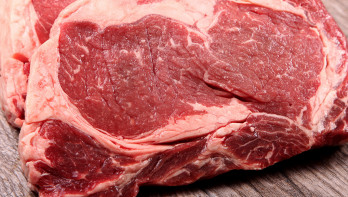Analysis Cattle & Beef
Chicken sales are currently low, but structurally strong
The broiler price remains the same for the third consecutive week. The extra summer demand is currently a bit low, causing prices to be precarious. However, the pressure from exports is virtually non-existent. Meanwhile, according to Rabobank, the structural demand remains strong.
The broiler price remains the same this week. For the third week in a row, broilers are traded at €1.15 per kilogram.
The broiler price holds steady, but in the Dutch market, it is heard that prices are precarious. Small changes in supply quickly lead to price adjustments. Due to the lack of sunny weather this spring, there was hardly any extra demand for meat for barbecues. Although this mainly affects the pork and beef markets, cold and rain also do not help the poultry meat market. Due to weak demand, a larger supply of chicken fillet and thigh meat puts pressure on meat prices.
Export pressure still not a factor
Meanwhile, exports barely exert pressure on prices. Polish poultry meat prices range between 5 zloty (at current exchange rates €1.15) and 5.40 zloty (€1.25). This price has been quite close to European prices for over two weeks. This price is still too low to create significant export pressure.
Prices remain high on the world market. In the leading Brazilian market, the price has dropped from around 7.40 (€1.25) real to 7.28 real (at current exchange rates €1.23). However, the difference in exchange rates is substantial. Since the end of May, the value of the Brazilian real has dropped from about €0.178 to about €0.169. This results in a practical difference of over 6 cents. While the difference in Brazilian prices in real is limited, the price in euros or dollars has significantly decreased. This makes Brazilian chicken competitive again compared to Eastern European prices.
Strong European sector
Furthermore, the Rabobank states that the European poultry meat sector is strong. The bank notes that broiler prices are still favorable for poultry farmers. This is mainly due to a strong demand for chicken meat. As prices of other meat types have risen, chicken has become competitive again. Despite the summer demand being slightly low, chicken remains popular with consumers in general. The high prices of pork and beef, along with higher disposable income, keep the structural demand high. Adding a quota for Ukrainian imports, the Rabobank concludes that the North European poultry meat market remains strong.
The bank also observes that the broiler market is becoming tighter. The transition of the Netherlands and Germany to concept chickens with Better Life or the German Tierwohl label continues to reduce production. According to the bank, this is still a factor in keeping both broiler and poultry meat prices high.
Only the Netherlands is shrinking
However, there is a downside to this development, which is a relative shrinkage of the Dutch sector. According to Rabobank, poultry meat production is increasing throughout Europe, except in the Netherlands. On average, broiler production in the Netherlands decreased by 4.5% in the first quarter compared to the same period in 2023. Production grew in the rest of Europe, especially in Central and Eastern Europe. Polish broiler production increased by 7%, and Hungary produced 10% more.
Additionally, France recovered strongly after several severe bird flu years. The production in that country increased by 15% in total. Spain saw a 6% growth in poultry production, and even Germany, which is in an earlier stage of transition, witnessed a 3% production increase. Poultry meat production in the United Kingdom increased by 5%. The Rabobank expects this growth to continue, although the rate of increase is slowing down, as most of the recovery from last year's bird flu outbreaks has already occurred.




